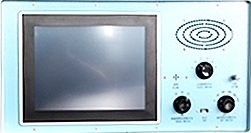Selection of Measuring Points for Bearing Vibration Measuring Instrument
Vibration is not only a quality evaluation standard, according to which, the quality grade of bearings can be divided; vibration is also a quality control method in the bearing manufacturing process, and the problems existing in the manufacturing process can be found by analyzing the vibration of bearings.Bearing vibration measuring instrumentIt has the characteristics of abnormal sound analysis and online management of bearing quality. It is suitable for bearing vibration detection in bearing manufacturers, and also suitable for the detection process of online analysis of a single bearing.
Selection of measuring points
The impact vibration caused by the failure of the rolling bearing propagates outward from the impact point in the form of hemispherical surface waves, and is transmitted to the box or frame through the bearing parts and bearing seats. Due to the high frequency contained in the impact vibration, every time it passes through the interface of the parts , its energy loss is about 80%. Therefore, the measuring point of the bearing vibration measuring instrument should be as close as possible to the load-bearing area of the bearing under test, and the intermediate transmission links should be minimized. The closer the detection point is to the outer ring of the bearing, the better. Therefore, manual During detection, it is necessary to judge the distance between the fault area and the side head according to the sound signal of vibration.
The position of the acceleration sensor and the speed sensor has a certain influence on the fault detection sensitivity. If the sensor is placed in the bearing direction, it is 100 percent, then it will be reduced to 95% (-5dB) in the bearing direction ± 45 degrees, and in the axial direction. 22%-25% (-12-13dB). When the thrust bearing fails and produces an impact and emits spherical waves outward, if the reading on the bearing cover facing the fault is 100%, then the reading on the axial direction of the bearing seat Reduced to 5 percent (-19dB). At the same time, it needs to be fine-tuned in combination with the sound of the vibration signal.
Since the vibration of rolling bearings reflects different characteristics in different directions, it should be considered to carry out vibration detection in three directions: horizontal (x), vertical (y) and axial (z), but due to the structure of the bearing vibration measuring instrument, Due to the limitation of installation conditions, or due to economic considerations, it is impossible to perform detection in every direction. At this time, two directions can be selected for detection. Combined with the actual situation, it is judged whether it is necessary to increase the measurement point.

Previous: No Information
下一条: Application of eddy current detection in flaw detection of bearing parts

